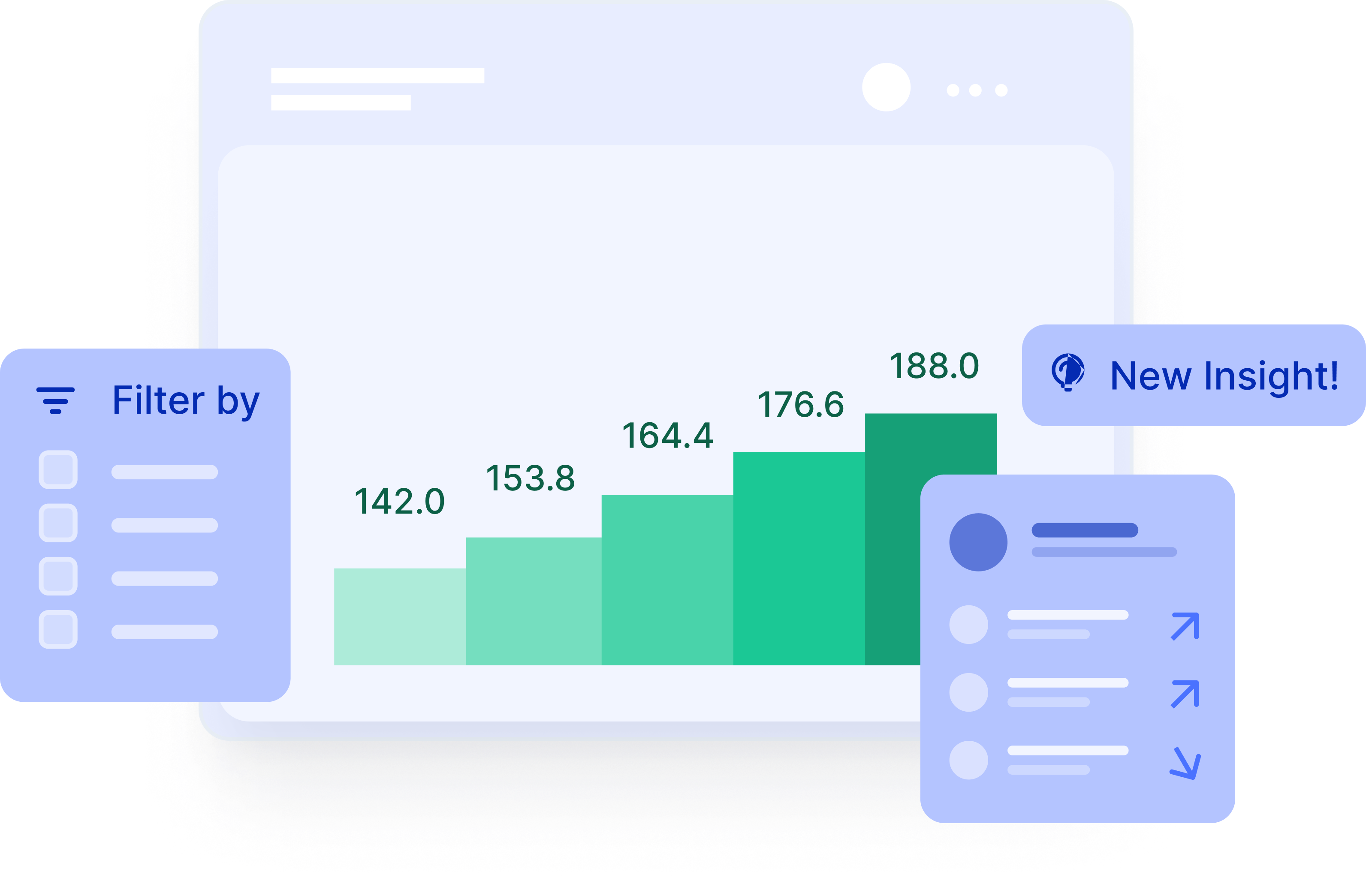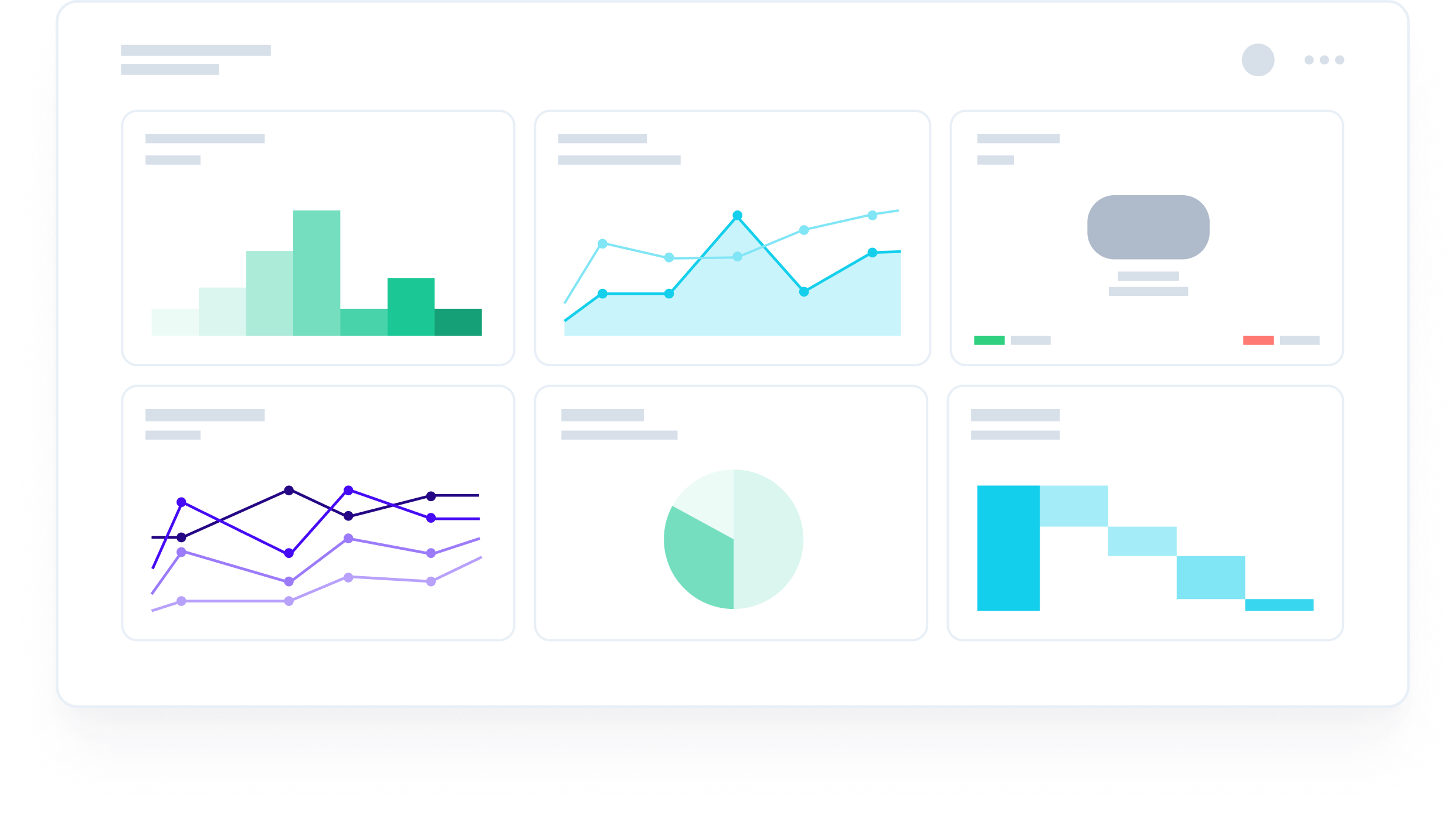Developing a Winning SaaS Go-To-Market Strategy: Tips, Tricks, and Best Practices

Co-Founder & CEO
The SaaS sector continues to experience rapid growth, with global spending expected to reach US$195 billion in 2023. It’s a fiercely competitive sector in which even established enterprises face a constant risk of being usurped by innovative startups. The industry undergoes constant changes, putting mounting pressure on vendors to adopt more efficient processes and more sustainable growth models.
In such a competitive market, it’s never too early to develop a SaaS go-to-market (GTM) framework that’s laser-focused on reaching the right target audience faster and converting them into loyal customers. That’s essential whether you’re launching your first ever product or your tenth one. In fact, B2B SaaS companies that have a fully developed GTM plan are already far ahead of their competitors. In this complete guide, we’ll explore a B2B SaaS go-to-market strategy template that can help you build a winning GTM plan.
Why do SaaS companies need a GTM strategy?
A GTM strategy is an action plan that outlines how a business will reach its target customers and establish a competitive advantage. This includes creating scalable inbound and outbound sales and marketing models, establishing goals and milestones, and deploying the right tactics for achieving those goals. For SaaS companies, the ultimate goal is to provide enough value to customers that they keep renewing or upgrading their subscription plans. No less important, all business units should be aligned on the same plan to effectively meet market demand and iterate on their progress.
Every business should have a GTM plan, regardless of whether they are launching a new product, expanding the reach of an existing product to a new market, or simply testing the market potential of a product in development. A GTM plan is usually a one-time project, which is then revised based on market feedback, as well as adapted and repeated for future projects based on data-driven insights.
Having a robust GTM strategy greatly reduces the chance of a failed launch. After all, launches almost invariably fail when business leaders adopt the belief of ‘build it, and they will come’. In a busy and often saturated market like B2B SaaS, nothing could be further from the truth, no matter how good the product.
The main purpose of a SaaS GTM strategy is to align all stakeholders under a common goal, with every business unit and individual having clearly defined roles and responsibilities. This offers a stronger sense of direction, not to mention a more cohesive customer experience, which is especially vital in SaaS business models. With the right GTM plan, you can quickly react to market changes, reduce the time it takes to launch new products and features, and minimize the risk of extra costs accrued by launch failures. Ultimately, almost every successful product launch is based on an effective SaaS GTM strategy.
A step-by-step guide to creating a winning SaaS GTM strategy
Following a structured plan is vital for a successful launch. That said, you can’t expect to roll out the perfect strategy the first time around. It’s important to remember that creating a winning SaaS GTM strategy is an iterative process that should be based on real-world feedback and data-driven insights. To that end, a GTM plan is a constant work in progress that you’ll need to adapt and optimize for each launch.
Here is a B2B SaaS GTM strategy template which includes the main steps you need to follow. Use this as your go-to-market checklist when you start putting together the plan.
Define your ideal customer profile
Your ideal customer profile (ICP) is a complete description of the perfect customer, built on the back of extensive research into your target market. Depending on the type of product you offer, you might have multiple ICPs. For example, a B2B SaaS company that offers information security and compliance solutions might primarily target highly regulated sectors such as finance, healthcare, and government.
It’s wise to keep the number of customer profiles to a minimum at the start in order to avoid targeting customers in industries with which you don’t have internal knowledge and experience. Targeting is paramount in GTM, especially in an industry as competitive as SaaS where it’s far better to be a master of one than a jack of all trades.
The easiest way to identify your targets is to conduct market research. Interview potential customers and find out who is buying your competitors’ products. Read online reviews to see where your competitors are falling short, and join trade shows and other events to meet your potential customers in person. Conducting surveys can also help define your target audience and their various needs and pain points. In most cases, this will be their ability to use your product for the betterment of their own business, such as to reduce costs, enhance efficiency, or improve employee wellbeing.
Just like the overall GTM plan, your ICP definition also needs to be revisited occasionally. At a later stage, you’ll be able to base your re-evaluation on actual revenue data. You can see who is actually buying your product across regions, company types, customer roles, sales channels and other parameters. This will enable you to adapt your target to the real market conditions that your team has come across in the field.
Establish a unique value proposition
Your unique value proposition (UVP) is a concise statement that describes the unique benefits and value that your service provides. Defining your UVP is an obvious first step to take, since it will help you build out your customer profiles and lay the foundations for your SaaS GTM strategy. As such, you’ll typically do this in parallel with identifying your target market.
A UVP is essential since, no matter what your business does, you’ll have competitors. A UVP is exactly what it sounds like – it’s what makes you different and how you can provide value in a way that your competitors don’t. When determining your UVP, you need to be as objective as possible by creating a concrete list of distinguishing factors. Your UVP should focus rigidly on your customers, their needs and their pain points. It’s all about the experience they have when using your product.
Determine your pricing model
While traditional retailers and other businesses can leverage multiple business models, SaaS is a distribution model in itself. However, there are still many factors to consider when choosing how you’re going to price your product. First, you need to choose the model - per user, usage-based, tiered pricing, freemium and more - that best aligns with the value proposition you selected and your target customers’ preferences.
At many SaaS companies, a big portion of the GTM budget goes towards trial and free-tier users. Especially for pre-revenue startups launching their first products, these tiers are vital for obtaining valuable feedback, as well as encouraging customers to upgrade to paid plans. Established B2B SaaS companies commonly offer free or trial tiers as well, especially for newly launched products or simply as a way to increase awareness and build trust with their target audiences.
You can then experiment with pricing by testing different price points to figure out which one maximizes revenue, customer acquisition and retention. Then monitor your pricing metrics until you are able to land on the pricing strategy that meets your business goals.
Sightfull pre-built dashboards

Develop your product messaging
Product messaging and positioning involves communicating your unique value proposition to your target audience. In other words, it concerns how you make your targets aware of your product and support them through their buyer journey. Messaging and positioning must form part of a broader strategy that spans the entire customer journey from the moment they first learn about your business to the experience they have as paying customers. As such, it should lead seamlessly into domains like customer experience and customer support, both of which are often said to be the new marketing.
Effective messaging is critical to the success of your product so here are a few helpful tips:
- Focus on product benefits - instead of just listing the product’s features, highlight how it delivers value and solves specific customer pain points.
- Use customer language - write (and talk) in a way that resonates with your target customers and speaks to their specific needs, such as with case studies that show how your product has helped businesses like theirs.
- Be clear and concise - avoid technical jargon and complexity by using simple languages that directly communicate the value of your product.
- Test and iterate - Work with potential customers to gather feedback on what resonates with them in order to refine your messaging and make it more effective.
Build a sales and marketing plan
Once you’ve determined how to best communicate your value proposition, it’s time to build a complete sales and marketing plan. This takes time and effort but as a minimum it should list the tactics and channels you’ll use to reach and convert your target customers. It should also include clear and achievable KPIS, as well as the budgetary and human resources required to reach these goals.
Whichever course of action you take to put your GTM plan in motion, it’s vital that it includes a complete view of the customer journey. As with the entire plan, you will need to continuously measure the performance of your sales, marketing and customer success efforts and use this data to refine your approach.
In addition, it’s important that your plan aligns with the availability of internal resources, although it’s perfectly viable to hire external expertise for carrying out GTM operations that are not in your core competencies. In fact, doing so can help you scale rapidly without having to increase the size of your internal team.
Iterate, optimize, and improve
Feedback loops between sales, marketing, customer success and product development are fundamental to any typical B2B SaaS GTM plan. It’s important to treat your strategy as a continuous process of learning, testing and improving, with data playing a central role in this process. The more visibility you have into your revenue data, the more informed your decision making will be. All digital activities generate data, and while not all data is useful, the data that is can be translated into actionable insights by any modern business intelligence and revenue operations platform.
For example, with the right data analytics infrastructure, you can easily determine which channels and campaigns have brought in the most revenue, or how conversion rates differ by product, region or customer segment. Once you have a few customers, you may also want to launch customer surveys to gain more nuanced people-centered feedback of the sort that conventional data analytics is unable to provide. Equipped with this information, you can iteratively improve on every aspect of your GTM strategy while also retaining the findings for your next big product or market launch.
Tips, tricks and best practices to be inspired by
Now that you know what goes into a go-to-market plan for SaaS companies, it’s time to start developing your strategy. This can be challenging due to the fact that the market is constantly evolving, shaping customer expectations along with it. That’s why it’s important to keep up to date with the latest trends and best practices adopted by successful businesses in your industry. Remember, to drive sustainable growth, you can’t afford to get stuck repeating the same campaigns without constant observability into your KPIs and how they align with broader business goals across the entire GTM chain.
Focus on the customer
Whereas traditionally companies focused heavily on internal goals, current GTM strategies focus specifically on the needs of the customer. This means you should always prioritize the preferences and pain points of your target customer by putting yourself in their shoes. The more value you can deliver throughout the customer journey, the more likely you’ll be able to move customers through the funnel from initial awareness to brand advocacy.
Prioritize alignment
You can’t expect to execute an effective SaaS GTM strategy if your sales, marketing, and customer success teams operate in bubbles. All stakeholders, from executive management to individuals in their respective departments, should be aligned around the same vision, culture, mission and goals. Everyone should be clear on their individual roles and responsibilities and how they complement the broader business strategy. To make this possible, it’s important to create a collaborative data-driven environment, empowered by the right tools and technology.
Experiment and iterate
As we’ve discussed, GTM isn’t a set-and-forget strategy, and it’s not something you’re likely to get right the first time. Don’t be afraid to experiment with new motions, activities and channels, particularly if you’re launching your first ever product or targeting an entirely new market. It’s fine to revisit your UVP and your ICP later on if necessary. After all, many SaaS companies find themselves appealing to new markets unexpectedly.
Leverage data analytics
It’s often said that data is the most valuable resource in the modern world, and with good reason. The problem is that the sheer amount of data that the typical B2B SaaS company generates can be overwhelming, so a lot of it ends up being an untapped resource. To prevent that from happening in the case of the GTM plan, you need to consolidate and integrate your revenue-related data sources for easy access to the information you need.
Stay agile and adaptable
Last but not least, your SaaS GTM strategy should be agile and adaptable to constantly changing market realities. The SaaS sector is always evolving, and companies that don’t keep up almost invariably fail within a few years. Remember, nothing about your GTM strategy is set in stone, and you should always be open to feedback from customers and employees alike. Be sure to regularly review your performance at meetings with key stakeholders, and stay up to date with industry trends and new technologies, as well as their potential implications.
Make the best decisions for your business.

Why you need revenue operations to execute an effective strategy
A robust GTM strategy drives business growth, but scale creates greater complexity. This is where revenue operations, or RevOps, comes into play. Although it’s a relatively new concept, RevOps is rapidly gaining traction in the B2B SaaS space, since it’s one of the driving forces behind establishing effective GTM plans that can drive revenue growth.
There are three main reasons for this:
First, the main goal of RevOps is alignment, specifically between sales, marketing, customer success and finance. In a RevOps-driven company culture, the goal is to keep everyone in sync to prevent duplicated efforts and other inefficiencies and have everyone sharing and using the same data, goals and best practices.
Secondly, RevOps and GTM are a natural fit for one another, because they’re both customer-centric. In traditional business structures, sales and marketing teams focus on acquiring new customers, while customer success focuses on growing and expanding existing customers. However, customers don’t see these functions as separate entities, but as one company. By bringing these functions together under the RevOps umbrella, SaaS companies can create a more seamless experience across the entire customer lifecycle.
Thirdly, as an area of digital transformation, RevOps greatly helps with data management and tooling. Although not a specific solution in itself, establishing a RevOps culture means adopting a data-driven approach to revenue generation. By integrating sales, marketing and customer success, RevOps leaders gain a 360-degree view of the customer journey, all the way from leads to renewals. This data will be invaluable for identifying trends, patterns and opportunities, and to inform decision-making across every revenue-generating function.
Building the perfect GTM strategy for SaaS products
Developing a winning go-to-market strategy is essential for any B2B SaaS company looking to succeed in a competitive market. By following the steps outlined in this guide and incorporating the tips, tricks, and best practices discussed above, companies can create a GTM strategy that’s tailored to their specific needs and goals.
Here are our a few takeaways to wrap up:
- A GTM strategy should clearly define the target customer, unique value proposition and pricing model, and include an agile and adaptable sales and marketing plan.
- Competitive research, product messaging, and choosing the right SaaS metrics and goals are also crucial components of a successful GTM strategy.
- To achieve maximum success, B2B SaaS companies should prioritize customer focus, alignment, experimentation, data analytics and agility.
With the right GTM strategy in place, B2B SaaS companies can confidently enter the market, attract and retain customers and drive revenue growth in a sustainable manner. By continually iterating, optimizing and improving their approach, these companies can remain competitive and adapt to changing market conditions, ensuring long-term success.
Want to build the perfect SaaS GTM strategy?
Discover how the first fully automated revenue analysis platform designed for business users can help you stop guessing and start winning.
Frequently Asked Questions
Why is a GTM strategy important for SaaS companies?
A GTM strategy helps effectively communicate their value proposition to potential customers and differentiate themselves from competitors. It also helps maximize customer acquisition and retention, and ultimately drive revenue growth.
How can a SaaS company measure the success of its GTM strategy?
Track key performance indicators (KPIs) such as customer acquisition cost (CAC), customer lifetime value (CLTV), conversion rates, churn rates, and revenue growth. You can also use customer feedback and market research to refine the strategy over time.
What are some common mistakes that SaaS companies make when developing their GTM strategy?
Some common mistakes include not understanding their target market, not effectively communicating their value proposition, pricing too high or too low, choosing ineffective sales and marketing channels, and not measuring and optimizing the strategy over time.
Talk to an expert
Learn what it takes to drive revenue growth and scale business
Precisely track and analyze your revenue performance
Gain access to essential insights and trends that directly impact your ability to drive revenue growth and enhance business performance.